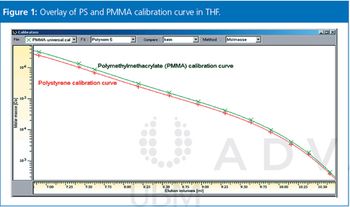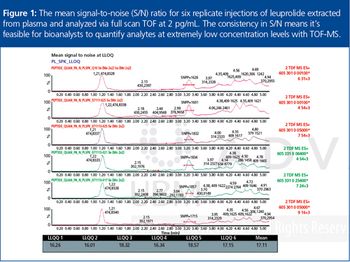
The Column
Click the title above to open The Column December 07, 2015 Europe & Asia issue, Volume 11, Number 22, in an interactive PDF format.

The Column
Click the title above to open The Column December 07, 2015 Europe & Asia issue, Volume 11, Number 22, in an interactive PDF format.

The Column
Click the title above to open The Column December 07, 2015 North American issue, Volume 11, Number 22, in an interactive PDF format.

The Column
High performance thin-layer chromatography (HPTLC) offers many advantages over conventional separation techniques when applied to complex samples. The Column interviewed Gertrud Morlock from Justus Liebig University Giessen in Germany, on her current research, which involves hyphenating HPTLC with multiple analytical techniques.

The Column
Polystyrenes (PS) are the most commonly used reference standards in gel permeation chromatography/size-exclusion chromatography (GPC/SEC) for nearly all organic GPC/SEC separations including high temperature GPC and pullulan or dextran for aqueous GPC/SEC. The majority of users rely on these standards for reproducible results. However, there is potential for improvements and this instalment of Tips & Tricks will discuss some general points that should be considered when determining calibration standards.

The Column
Gel filtration chromatography (GFC) is the most widely used method for quantitating protein aggregates in therapeutic drugs. It is a simple method, but prone to error as a result of poor method development and column selection. GFC columns tend to non-specifically adsorb large proteins and aggregates resulting in poor quantitation of “true” aggregate amount. Sample “priming” and mobile phase optimization can help reduce such irregularities. Simple method development rules using new column technologies are presented that demonstrate improved accuracy for these methods.

The Column
In an era where “more data in less time” is expected, bioanalytical scientists have had to become more resourceful. Consequently, bioanalytical laboratories are adopting and extending the use of high-resolution mass spectrometry (HRMS) and, in particular, time-of-flight high-resolution mass spectrometry (TOF-HRMS). One of the key benefits of TOF-HRMS is consistent resolution, sensitivity, and mass accuracy - even at high scan speeds with large molecules being analyzed.

The Column
Bioanalysis of biologics presents a number of technical challenges. Ligand binding assays (LBA) are the gold standard bioanalytical technique for quantification of biologics in complex matrices such as serum and plasma but selectivity issues and the need for specific capture reagents limit their applicability in the drug discovery and development phase. Liquid chromatography coupled with tandem mass spectrometry (LC-MS-MS) is widely used for highly selective and sensitive bioanalysis of small molecules. However, large molecule bioanalysis presents challenges including the need for extensive and complex sample preparation for LC-MS-MS. This article explores the limitations of LC-MS-MS for bioanalysis of biologics and some of the latest trends for overcoming these in bioanalysis laboratories.

The Column
It is with great sadness we announce the death of Professor Michel Dreux. Professor Dreux was a professor at the University of Orléans, France.

The Column
A new liquid chromatography tandem mass spectrometry (LC-MS-MS) method has been developed to study besifloxacin, which is used to treat bacterial conjunctivitis.

The Column
LGC (London, UK) has announced its acquisition of Maine Standards Company (Cumberland Foreside, Maine, USA).

The Column
Anti-histamines and compounds used to medicate anxiety and seizures were among those identified in grocery market fish fillets using a novel gas chromatography–mass spectrometry (GC–MS) technique (1).
